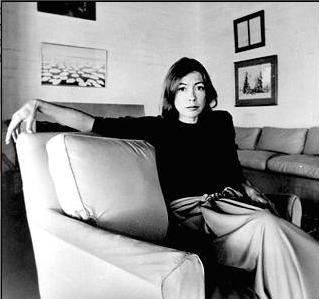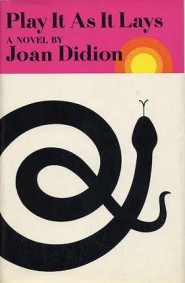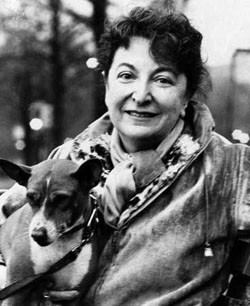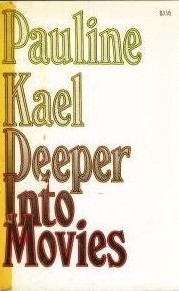The Cordial Enmity Of Joan Didion And Pauline Kael
by Evan Hughes

A column that resurrects the highbrow gossip of yore.
Here’s an anecdote from James Wolcott’s crackerjack new memoir of ink-stained ’70s New York, Lucking Out: Wolcott, then in his twenties and cutting his teeth at the Village Voice, tagged along with Pauline Kael for a drink at the townhouse of a top Newsweek editor. Kael was three decades older than Wolcott and miles above him then in the editorial food chain, but he wasn’t about to ask the most famous movie critic in America why she kept inviting him to screenings. (Whatta town.)
The only prominent item on the enormous glass coffee table at the editor’s house was Joan Didion’s then-latest novel, A Book of Common Prayer (1977). Kael asked the host what he thought of it. “The editor reached for the novel, held it up as if it had healing properties, and pronounced: ‘It’s full of resonance.’” Wolcott adds: “I didn’t dare exchange glances with Pauline, for whom Didion was full of something, but it sure wasn’t resonance.”
Kael, who died in 2001, had a simmering rivalry with Didion that occasionally came to a boil, as Nathan Heller notes in The New Yorker. Like all rivalries, it no doubt owed something to what the two had in common. David Kipen once said, “The story of modern American cultural criticism is the story of three California girls who went East — Pauline Kael, Susan Sontag and Joan Didion.” Kael and Didion both went to Berkeley (Kael didn’t graduate) and shook off sexism and East Coast bias to gain mountaintop perches in the literary-journalistic landscape. It’s not hard to imagine why they would have spent some time playing compare-and-contrast.
They had occasion to cross paths, but mostly the contretemps played out in print. When the movie version of Didion’s novel Play It as It Lays appeared in 1972, with a script co-written by Didion and her husband, John Gregory Dunne, Kael took the opportunity to give the book a beating. Delivering a shock to Didion’s cultish following, she called the book “ridiculously swank” and added that she’d read it “between bouts of disbelieving giggles.” Centered on the disintegrating life of a young but fading model-actress, the novel sounds a note of alienation and despond on the baked sands of moneyed Hollywood. Kael wrote that she “whooped” at the first line and “whooped” at the ending, quoting both.

A longtime Didion enthusiast (and we are legion), I was a bit alarmed to encounter these quotes recently and decided to correct my failure to read this novel and see if Kael was being unfair; there’s something suspect about all that whooping. The title always seemed alluring besides, Play It as It Lays — conjugation problem notwithstanding, how can you go wrong with the combination of Didion and silky cardsharp argot? It is no pleasure to say that you can indeed go wrong. Despite a couple of exceptional scenes, the novel is unaffecting, faux-profound, and more out of focus than it wants to be. Score one for Kael on this point, I’d say.
The following year, Didion’s husband struck back, reviewing the Kael collection Deeper into Movies in the Los Angeles Times Book Review. Dunne points out in the first paragraph that he had accepted the assignment prior to the pan of Play It as It Lays, while also mentioning that Kael’s previous book, the “arrogantly silly” Raising Kane, made him “giggle and hoot.” (Is there an echo?)
Dunne dismantles Kael in a more levelheaded fashion, on the whole, than Kael had torched his wife. In fact, there’s something touching about the evenhandedness and candor in Dunne’s public description of the relationship between Kael and Didion. He loves his wife so much, he doesn’t need to tip the scales in her favor:
They circled each other warily, Ms. Kael from the Napa Valley, my wife from the Sacramento Valley, and they hit upon their rhythm — Valley talk. They talked about ranches and pickups and whiskey on the floorboards and the Silverado Trail, two tough little numbers, each with the instincts of a mongoose and an amiable contempt for the other’s work, putting on a good old girl number. It was a funny act to watch and I liked her.
Dunne gives Kael credit for a passion for movies that matches “anyone who has ever written about them,” and for being “funny, quirky, bright, encyclopedic, healthily mean-spirited, combative, malevolent, contentious and often right.” But the switchblade does come out. His main complaint is simply that Kael doesn’t know what she’s talking about, that her work amounts to a lovely edifice built on sand. Dunne knew his way around a set, and his specific examples of her “implacable ignorance of the mechanics of filmmaking,” though certainly selective, ought to concern a Kael fanatic.
How much to discount Dunne’s piece in view of his obvious bias? It was as hard to say then as it is now. Kael and Didion have both been lacquered over with layers of legend. It’s almost jarring that Didion is still at work, publishing a new memoir in days. If you have a ticket to see her at the New York Public Library in a few weeks (it’s sold out), you will see the very same woman who wrote “Goodbye To All That” in her early thirties, 44 years ago. That essay is so popular that it now feels embarrassingly cliché to say how much I adored it the first 25 times I read it. I would be quietly devastated if a new friend or girlfriend didn’t get it when I shared my faded photocopy. This probably isn’t going to work out.

In Kael’s case, Brian Kellow does a lot to sand away the paint obscuring her in his new biography, but what comes through most memorably is still Kael the Phenomenon. She wielded tremendous clout with those in her circles of influence, and not only because of her position at The New Yorker. (Even at her peak she shared the job with Penelope Gilliatt. We’re still waiting for a big biography of her — but then, as Tom Carson says, isn’t every other film critic in the language in the same boat there?) Crowds rearranged themselves when Kael entered the room, literally and figuratively. She had an almost talismanic belief in the validity of her first response to a movie (she never saw it twice), and she wrote with a verve and abandon that caused subscribers to spit up the morning coffee in delight or horror. Readers, terrified filmmakers, protégés (the “Paulettes”) — they hung on her words of judgment and her wide-angle riffs, and wondered how far she could push the bounds of New Yorker decorum and house style.

It’s hard to give writers a fair reading once they’ve become this famous. It’s even harder if you already hate the writer, and it seems to me that Kael and Didion lost the will to be fair to each other. The way Didion pulls showbiz rank on Kael in the essay “In Hollywood” lacks the class and persuasiveness of Dunne’s approach. Collected in The White Album (1979), the piece first appeared in the New York Review of Books five months after Kael’s Play It as It Lays review was published, and it posed her work as emblematic of film writing that “approaches reality only occasionally and accidentally.” The essay sniffs at the entire field of movie criticism, actually, though my guess is the mention here of lecture fees is directed specifically at Kael, who worked the circuit liberally: “Making judgments of films is in many ways so peculiarly vaporous an occupation that the only question is why, beyond the obvious opportunities for a few lecture fees and a little careerism at a dispiritingly self-limiting level, anyone does it in the first place.”
For Kael, Didion’s work suggested a familiarity with the high life that pushed all the wrong buttons. Kael was raised partly on a chicken farm and worked a string of bad jobs as a single mother before getting her feet set. She harbored a lot of bitterness toward people she thought had it easy, as Kellow shows. To be “swank” was to risk her enduring disdain. The existential zero at the bone that Didion absolutely conquered often had nothing to do with material need. It was going to bother Kael no matter what. “I did my own share of soul-wrestling,” Kael once said, “and it’s not too tough to do.”
Even in the basically accurate Play It as It Lays review, the attack gets personal enough that an underground motive shows through. Kael speaks of the story as “the ultimate princess fantasy” (it’s more of a nightmare, really) and writes, “Joan Didion wanted Frank Perry to direct — possibly because he had already glorified the suffering little-girl-woman in ‘Diary of a Mad Housewife.’” Another penalty flag marring a good football game. In response, Dunne wrote to Kael to remind her that he had already told her at a party that Perry was not the first-choice director.
The rivalry missed its chance to rise to the level of the great ones, despite the titans involved. Kael and Didion didn’t tussle often enough, for one, but they also didn’t fight over the right things. When a leading critical mind takes Didion’s work as a cue to pull out the cudgel that a rich person doesn’t get to be depressed, we all lose. And does Didion still feel that Kael needed “vocational guidance”? If only they had fought about the movies and what they meant to the culture during Kael’s heyday, one of cinema’s golden ages. And I’d love to see Didion assess Kael’s legacy now in more than a one-line zinger. She would do it as no one else could.
Related: Pictures Of Joan Didion
Evan Hughes’s book, Literary Brooklyn, a work of literary biography and urban history, has just been published. He’s on twitter.
